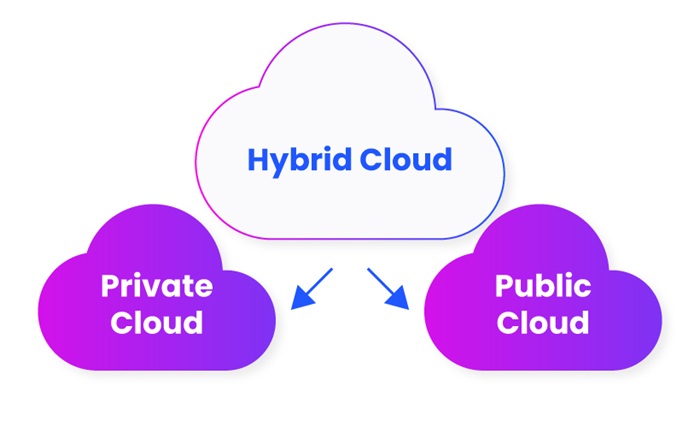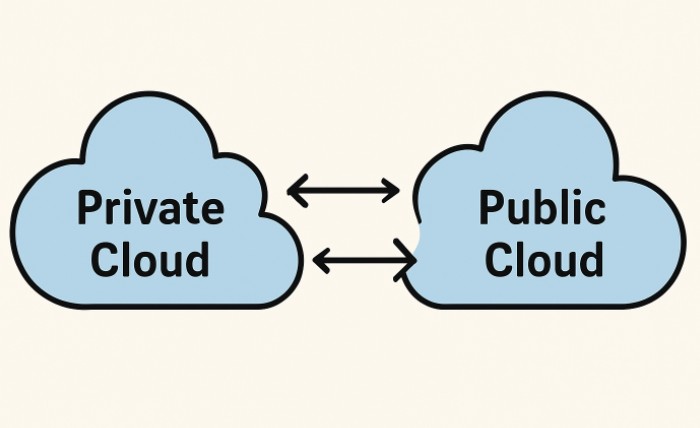
Key Takeaways
- Enterprise hybrid cloud adoption helps businesses achieve flexible, scalable IT infrastructure and gain a competitive advantage.
- Combining public and private cloud resources drives agility and innovation while optimizing costs.
- Security and compliance are enhanced through granular control and robust governance policies.
Table of Contents
- Introduction
- Understanding Enterprise Hybrid Cloud
- Enhancing Business Agility
- Driving Innovation Through Flexible Infrastructure
- Cost Management Benefits of Hybrid Cloud
- Security Considerations in Enterprise Hybrid Cloud
- Real-World Applications and Success Stories
- Conclusion
Introduction
As digital demands skyrocket, businesses are compelled to innovate rapidly, scale efficiently, and react to ever-changing market dynamics. Enterprise hybrid cloud strategies have become central to achieving these goals by merging the best of private and public cloud frameworks. Organizations embracing hybrid cloud not only future-proof their operations but also empower their teams to experiment and deploy solutions faster than ever before, often utilizing cloud orchestration tools to manage increasingly complex environments.
The ability to mix and match on-premises and cloud-based resources gives enterprises a competitive edge. Whether it’s streamlining workloads, achieving compliance in sensitive sectors, or scaling globally, hybrid cloud architectures enable tailored solutions aligned with strategic objectives. Forward-thinking enterprises using orchestration platforms can adapt more nimbly and make smarter technology investments.
Understanding Enterprise Hybrid Cloud
Enterprise hybrid clouds blend the security and control of private infrastructure with the flexibility and scalability of public cloud services. This unified model allows data, applications, and workloads to move seamlessly between environments, ensuring optimal placement based on application criticality, regulatory requirements, and real-time capacity needs.
Enterprises might host mission-critical, regulated data in private clouds or on-premises while leveraging public cloud services for less-sensitive or highly scalable functions, such as disaster recovery or large-scale analytics. This level of customization enables businesses to address distinct regulatory, operational, and budgetary considerations.
By enabling seamless data mobility and unified management across environments, hybrid cloud approaches power IT modernization and the shift toward business-centric infrastructure design.
As organizations grow, a hybrid approach removes roadblocks to cloud adoption and eliminates vendor lock-in, providing a path forward that fits both legacy environments and emerging digital workloads.
Enhancing Business Agility
The most agile businesses today are those that can pivot quickly, innovate ahead of the curve, and scale up or down with confidence. Hybrid clouds empower teams to rapidly deploy new offerings, shifting resources as project needs change and leveraging the best-fit environments for each workload. Companies can respond to new opportunities—whether entering new markets or launching products—without the traditional bottlenecks of hardware procurement or data center limitations.
Centralized management solutions, including intelligent automation and orchestration platforms, further enhance agility by providing unified control and visibility across disparate resources. This dynamic approach significantly reduces time-to-market and helps organizations maintain their competitive edge.
Driving Innovation Through Flexible Infrastructure
Innovation is fostered by giving technical teams frictionless access to the right tools and environments. With hybrid cloud, developers and engineers can experiment with public cloud services—such as AI, advanced analytics, or IoT platforms—while keeping sensitive data secured in private clouds. This encourages prototyping, faster iteration, and cross-functional collaboration.
Moreover, cloud-native application design thrives when enterprises can decompose workloads and deploy them where they deliver the highest value. Whether scaling web apps for millions of users or running compliance-heavy transactions internally, hybrid cloud environments support modern business models without forcing compromise on security or performance.
Cost Management Benefits of Hybrid Cloud
Cost control remains a pivotal driver behind hybrid cloud adoption. Organizations can maximize their IT budgets by leveraging the “best of both worlds”—running stable, predictable workloads within their own data centers while tapping into public cloud elasticity for unpredictable or seasonal spikes. This model reduces upfront investments in hardware and software, shifting operational costs to a pay-as-you-go basis.
Integrated cloud management platforms help IT teams proactively monitor spending, allocate resources based on policy, and accurately forecast future costs. Right-sizing workloads and leveraging usage-based billing models are two critical levers for maintaining cost efficiency while ensuring optimal performance.
Security Considerations in Enterprise Hybrid Cloud
Trust and confidence in hybrid cloud strategies hinge on robust security measures. Enterprise data often traverses multiple environments, making governance policies, identity and access management, and end-to-end encryption paramount. By maintaining direct control over sensitive workloads and regulatory data, businesses satisfy compliance mandates while still reaping the benefits of cloud-enabled innovation.
Experts recommend continuous risk assessment and automated threat detection to protect hybrid environments. Coordinated incident response plans spanning both on-premises and cloud assets are essential for rapid mitigation and recovery.
Real-World Applications and Success Stories
Across industries as diverse as banking, healthcare, and retail, hybrid cloud has unlocked new levels of efficiency and digital opportunity. For example, Swiss enterprises have advanced their hybrid adoption, reaping rewards in both data residency and overall cost management. Their strategies demonstrated resilience amid economic uncertainty through improved operational agility and intelligent IT spending.
As highlighted in recent reports, hybrid cloud adoption is accelerating worldwide as leaders seek more adaptive and cost-effective approaches to modernization. From streamlining global supply chains to enabling real-time customer engagement, hybrid cloud architectures are fueling the next wave of business transformation.
Conclusion
The enterprise hybrid cloud stands as a cornerstone technology, enabling organizations to adapt quickly and grow consistently in volatile markets. By carefully orchestrating private and public cloud resources, businesses can innovate at scale, manage costs strategically, and maintain rigorous security postures. With experienced partners, robust cloud orchestration tools, and a commitment to best practices, the hybrid cloud approach offers proven value for organizations ready to drive digital transformation and outpace the competition.





